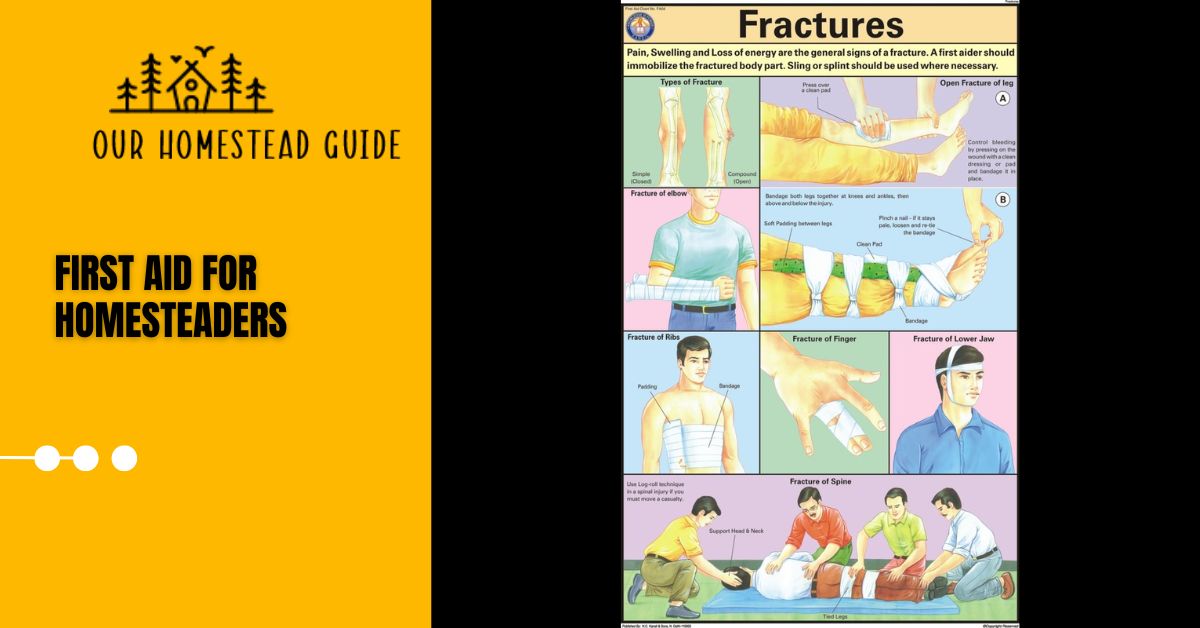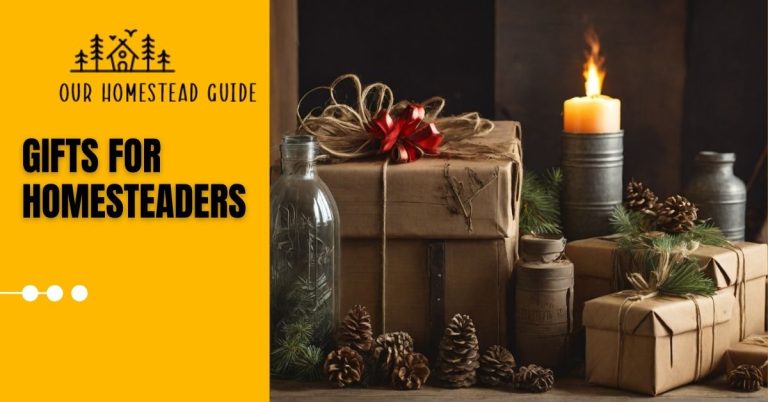Emergencies First Aid for Homesteaders: Complete Guide
First Aid for Homesteaders Learn how to treat burns and control bleeding, have a first-aid kit stocked with necessities like bandages, painkillers, and antiseptics, and be aware of your local emergency contacts. If you prepare ahead of time, you may confidently continue homesteading even in the face of minor setbacks and unanticipated obstacles!

| Aspect | Key Point | Additional Information |
|---|---|---|
| Importance | Crucial for remote living, handling minor injuries and illnesses. | Adapt kit based on the specific needs and hazards of your homestead. |
| First Aid Kit | Stock with essential items like bandages, gauze, antiseptics, pain relievers, etc. | Adapt the kit based on the specific needs and hazards of your homestead. |
| Essential Skills | Be aware of property hazards like plants, insects, and animals. | Consider wilderness first aid training for additional skills. |
| Homestead Specificity | Red Cross, wilderness first aid courses, and natural health resources. | Reduces reliance on immediate medical attention, and provides peace of mind. |
| Natural Remedies | Explore herbs and plants for treating common ailments. | Research and understand proper usage before utilizing. |
| Additional Resources | Red Cross, wilderness first aid courses, natural health resources. | Utilize available materials and information to stay informed. |
First Aid for Homesteaders Need Materials
A well-stocked first-aid kit is essential for any home or workplace. It can help you treat minor injuries and illnesses quickly and effectively. Here are some of the essential materials you should include in your first-aid kit:
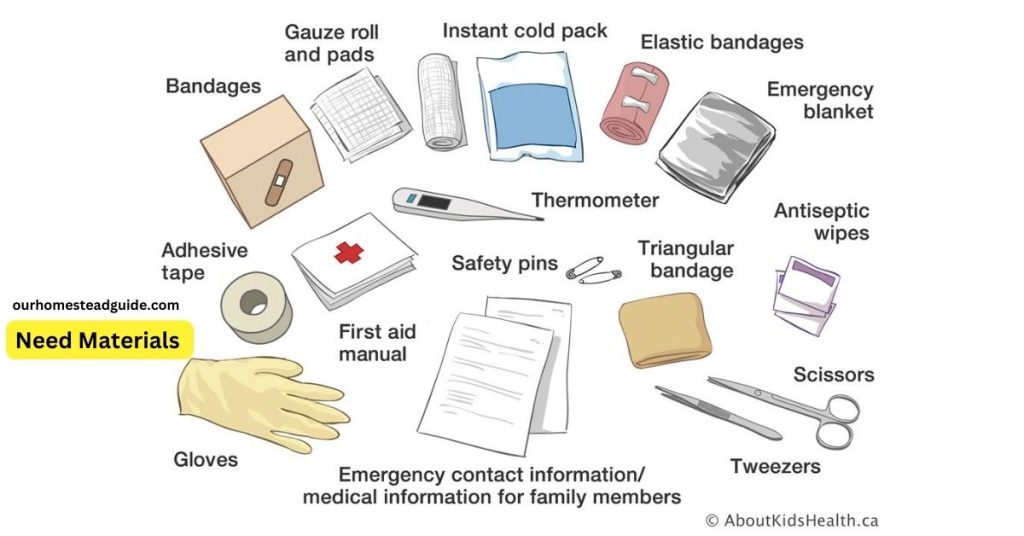
Wound care:
- Adhesive bandages in various sizes
- Sterile gauze pads in various sizes
- Non-adherent sterile pads
- Roller bandages
- Triangular bandage
- Adhesive tape
- Sting wipes
- Antiseptic wipes or solution
- Antibiotic ointment
Pain relief:
- Acetaminophen (Tylenol)
- Ibuprofen (Advil, Motrin)
Other supplies: - Instant cold compress
- Thermometer
- Tweezers
- Scissors
- Safety pins
- Disposable gloves
- Blanket
- First-aid manual
- Eye wash
Step 1: Assess and Prepare for Environmental Risks
Alaskans face particular difficulties while living off the grid, including harsh winters, high winds, and other environmental dangers.
Recognize the dangers associated with the surrounding environment, including falling branches, floating debris from the lake, and interactions with wildlife.
Step 2: Address Immediate Concerns During Emergencies
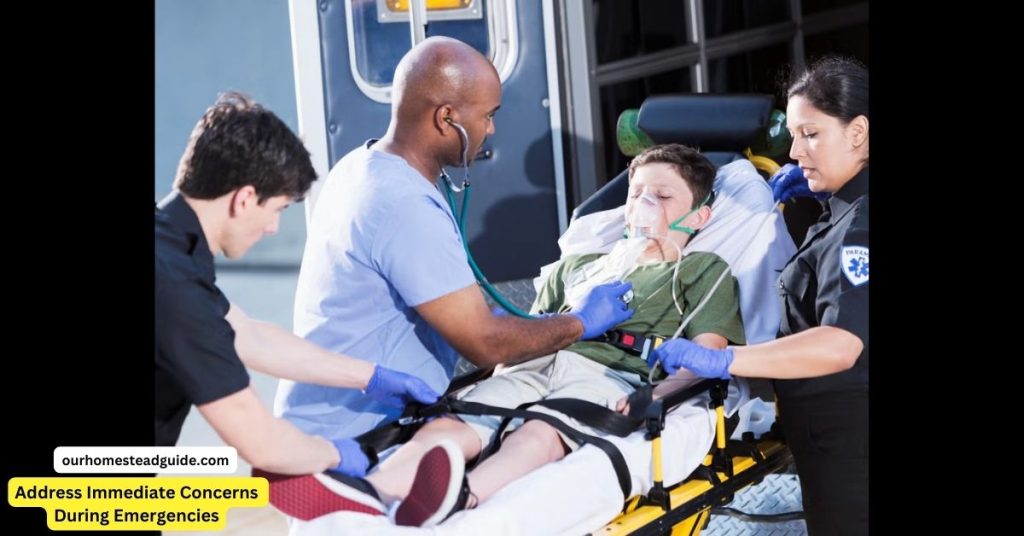
If your boat breaks down or you find yourself stranded in town, think of other ways to get around, such as hiring a helicopter if necessary.
If one homestead member must go, have emergency preparations in place that will guarantee their prompt return in the event of an emergency.
Step 3: Weather-Related Safety Measures
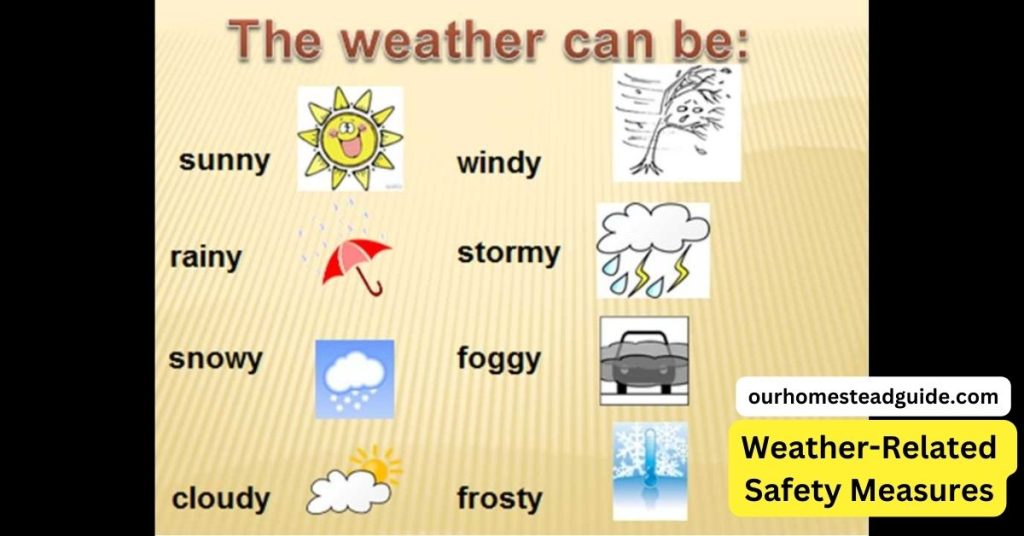
When there are severe weather conditions, stay inside, especially if there is a chance of limbs or trees falling.
Use insulation techniques to keep pipes from freezing in cold weather, such as covering exposed pipes with bubble foil.
Step 4: Utilize Available Resources
Repurpose old coolers or insulating materials to shield equipment from severe weather, such as ball valves.
Step 5: Evaluate and Upgrade Communication Services
For improved access and communication in an emergency, think about updating your communication services—for example, moving from HughesNet to Starlink.
Step 6: Monitor Solar and Wind Power Generation
Recognize the limitations of solar and wind power, particularly in the evening and on windy days.
To guarantee effective energy usage, monitor power generation regularly. When power generation is low, take into account other sources of energy.
Step 7: First Aid Kit Essentials
Keep a first aid kit packed with the necessities, including bandages, surgical soap, sterile saline wound wash, triple antibiotic ointment, and eye wash.
Medical supplies should have their expiration dates checked and replaced as needed.
Step 8: Address Common Injuries
Make sure you know how to treat common injuries such as cuts, scratches, and infections.
To stop infections, bandage wounds as soon as possible, use sterile supplies, and provide medicines.
Step 9: Tourniquet and Emergency Medical Procedures
For serious injuries that might need to be attended to right away, have a tourniquet in the first aid bag.
Learn the fundamentals of emergency medical procedures, and if you sustain serious injuries, get expert assistance.
Step 10: Regularly Review and Update Safety Measures
Examine safety gear, first aid supplies, and emergency protocols regularly.
Remain up to date on new safety precautions and adjust procedures as necessary.
A First Aid Kit for Ten Common Injuries at Homestead
Being a homesteader is an active, physically demanding lifestyle, and injuries are a common occurrence.
Everyone gets hurt occasionally, and you will need to administer some basic first aid. However, homesteading is distinct. Everyday activities and endeavors undertaken by homesteaders raise the risk of an accident or illness needing first aid.
You are on your own if you live far enough from a medical facility or are reluctant to consult a doctor for any reason—such as a pandemic, lack of health insurance, or another reason—but certain injuries are severe enough to need expert medical attention or even a 911 call.
Standard First Aid Kits Don’t Always Cut It
Purchasing a basic first aid pack that can handle the majority of accidents is rather simple. Except for some highly costly adventure medical kits, they come in a variety of sizes and price points, but most regular first aid kits lack the variety of first aid supplies a homesteader could want.
Assembling your own is the easiest solution. You may assemble it from the ground up or add goods necessary for a farm lifestyle to a pre-made first aid kit.
Unique First Aid Challenges for a Homestead
After discussing some of the typical first aid issues faced by homesteaders, we’ll go over a list of potential wounds, tools, materials, and medications for a first aid kit specific to homesteading.
These are ten ailments and injuries that a homesteader may have that are not ordinary problems, listed alphabetically.
Allergies
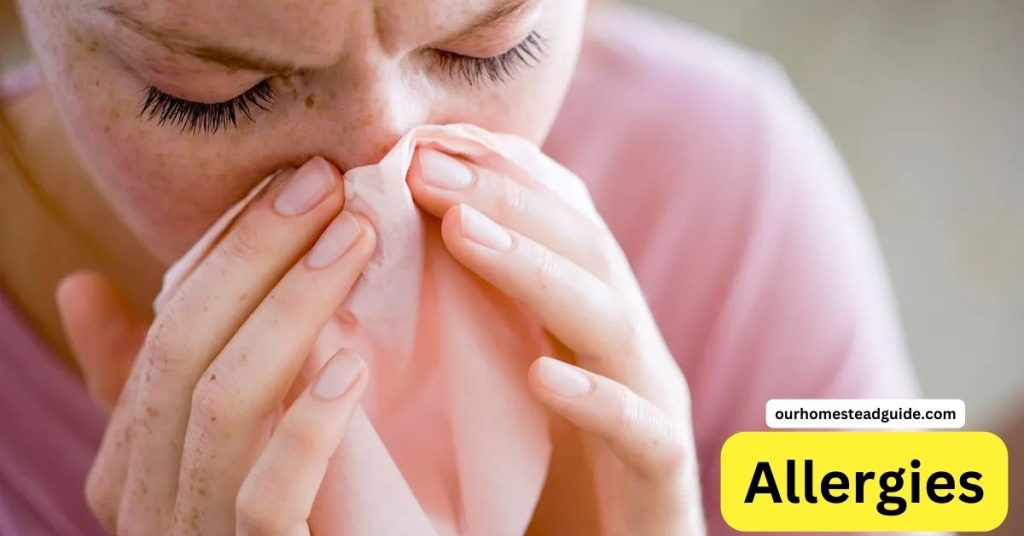
Most people who are allergic to anything have allergy medications on hand, such as epinephrine or Benadryl. This is particularly true for those who suffer from severe allergies that may result in breathing difficulties or anaphylactic shock.
Treatments for allergies can provide relief from a range of allergy symptoms, including hives and congestion. The most effective remedy is epinephrine or an EpiPen. It needs a prescription from a doctor and is used to treat severe allergic responses to bee stings or certain food sensitivities.
Allergens, ranging from pollen from fields and woods to rashes from hazardous plants, are a continual source of exposure for any homesteader who is prone to allergies. For rashes and hives, topical ointments are available in addition to oral medications.
Breaks and Sprains
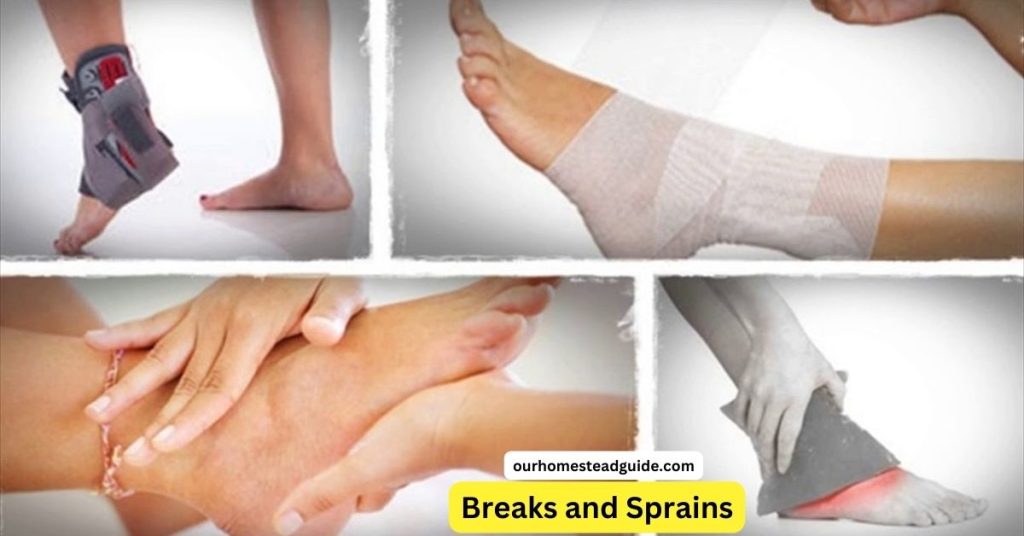
Homesteaders seem to find every method to sprain an ankle or wrist, or worse, break an arm or leg, whether it’s slipping into a rut in a field, stumbling over a log, or falling from a ladder.
While sprains are typically treatable at home, fractured bones should always be attended to by a medical expert. A sprain’s main drawback is that it prevents us from working until it heals. For this reason, a first aid kit should be able to treat the injury as well as offer some extra support so you may continue working if necessary.
Burns
Homesteaders appear to come into contact with fires sometimes. Burns are another reality of life on a farm, whether we’re tending to a brush fire, burning brush, smoking a pig in a barrel smoker, loading and stoking a wood-burning furnace, or something else entirely.
Additionally, we frequently work near boiling items, such as big pots of water used to process canned goods or boil maple sap to make syrup. Another requirement for homesteading is the capacity to treat burns of the first, second, and even third degrees—though third-degree burns should only be attended to by a medical expert.
Cuts and Scrapes
The most frequent injuries suffered by homesteaders are little cuts and scratches, yet how many of us just let those small wounds bleed until they scab over?
The issue is infection, which can result from germs that are already present on the skin or from something we come into contact with when the tiny, bleeding wound gets in touch with dust, dirt, and other objects during the day.
Everything gets better with a little first aid, but treating them requires time and supplies. Any cut or scrape may be quickly treated with a first aid kit that fits into the pocket of your shirt, sticky bandages, and a package of topical antibiotics.
Deep Wounds
This isn’t about gunshot wounds; instead, it’s about deep wounds that are typically brought on by big, sharp objects like knives, axes, machetes, and blades attached to machinery, as well as numerous other sharp objects and farm equipment that may take us off guard.
Many wounds may be healed with bandages, but deeper wounds may need additional first aid materials, stitches, and topical medicines to avoid infection. A homesteader may also require a “field dressing,” like to those used on soldiers, to return to battle—that is, to your farm and fields—even if any wound must be wrapped.
Eye Injuries
Another all too frequent injury for anybody living an active, physically demanding lifestyle, such as a homesteader, is this one. Whether it’s from a sharp stick on a tree or metal shavings flying from a chainsaw or grinder, eye injuries generally catch us off guard.
The obvious solution to prevent eye injuries is to wear protective eyewear, but how many of us use them for a stroll in the forest or assume we’ll only need them for a single chainsaw cut? A homesteader must unquestionably know how to provide eye first aid, and a major eye injury necessitates calling 911.
Infections
An infection may arise from any wound that pierces the skin, from a little cut or scrape to a major incision or burn. Neosporin and other topical antibiotics are a viable option for prevention, but you may need to monitor the site for any red streaks or patches that form over time.
In that case, seeking expert medical attention is strongly advised, along with the prescription of an antibiotic such as Amoxicillin or Cipro.
Infections (Fungal)
Long-term skin exposure to moisture is the main cause of fungal infections, both in development and dissemination. On the foot and in skin creases, fungal infections are frequent. It’s common for many homesteaders to encounter damp and muddy circumstances regularly, whether it’s strolling through the dewy grass in the morning or laboring through the muck of a cattle feedlot.
Any homesteader’s constant companion is sweat, which over time can cause chafing or even a fungal infection. The best way to cure a fungal infection is to avoid it, but this can only be done with the right information and supplies.
Insect bites
First aid is necessary for a variety of bug bites that can affect anyone who spends a lot of time outside. Since many of us homestead in isolated regions that are classified as wilderness, bugs are a common friend. We also tend to get into the thick of things.
We also have a reputation for dismantling objects, and occasionally we catch us off guard with a variety of wasp, hornet, and bee nests. However, we do come across a fair amount of spiders, from Black Widows in the scrub we’re cleaning off the side of the barn to webs in the rafters of a chicken coop.
Venomous Bites
Consider spiders and snakes. While snakes and spiders are less common among city dwellers than among homesteaders, encounters can still occur from a variety of situations, such as clearing brush piles, strolling through the woods, or harvesting bush beans from the garden.
A bite from a snake or spider should be treated seriously. Even non-venomous snakes can become infected since they are wild animals. Venomous snake bites are a different situation, thus learning how to utilize a snake bite kit in advance of being bitten is a smart idea in addition to having one.
Level 1 Conditions
Level 1 conditions require basic first aid.
1st-Degree Burn
- Apparent Symptoms: Redness, blistering.
- Equipment for Continuous Treatment: N/A
- Supplies for Immediate Treatment: Ice for immediate relief or cold water, bandages.
- Meds Possibly Needed for Treatment: Topical pain relief spray, triple antibiotic ointment with topical pain relief.
Allergic Reaction (mild)
- Visible Symptoms: Itching, swelling, and hives.
- Equipment Not Listed for Continuous Therapy:
- Supplies Not Needed for Emergency Care:
- Medication Possibly Needed for Treatment: anti-itch spray, Benadryl.
Coughing and Congestion
- Manifest symptoms include coughing and sneezing.
- A tea kettle or humidifier would be good equipment for continuous treatment.
- Water for steam is a necessary supply for immediate treatment.
- Possible medication needed for treatment: VapoRub and cough medications.
Eye Injuries
- Manifest symptoms include redness, tears, and impaired eyesight. CALL 911 if there is bleeding or if the symptoms are severe.
- Eye first aid kit as equipment for ongoing care.
- Sterile water for quick rinsing is a necessary supply for urgent treatment.
- Treatment Medication: Eye drops to provide ongoing relief.
Fever Due to Cold or Flu
- Manifest symptoms include a temperature range of 102.5 to 100° F.
- Washcloths, a reusable ice bag, and a thermometer are the tools needed for continuous treatment.
- Ice for the bag and cold water for the cloths are supplied for urgent treatment.
- OTC painkillers are medications that may be required for treatment.
Inflamed Gums
- Symptoms that are easily evident include gum line pain and edema.
- Tools for Ongoing Care: toothbrushes and dental picks.
- Items Needed for Quick Relief: mouthwash, toothpaste, floss, or a salt and water rinse.
- Infection-related medications that may be required for treatment include Cipro or amoxicillin.
Insect Bites Including Bees, Wasps, Hornets, Fire Ants, and Non-Venomous Spiders
- Evident Symptoms: Swelling and soreness in the affected area.
- Refillable ice bag as equipment for continuous treatment.
- Ezoic Resources for Prompt Intervention: For instant relief, use ice in the ice bag.
- Medication That May Be Needed for Treatment: Baking soda and Topical Pain Relief Spray. (If allergic to stings, use adrenaline.)
Shallow Cut
- Signs and symptoms include light bleeding.
- Equipment Not Listed for Continuous Therapy:
- Antiseptic wipes and a variety of bandages are supplies needed for immediate treatment.
- Antibiotic ointment with three doses might be necessary for treatment.
Sprain
Manifest symptoms include pain, edema, and redness.
Tools for Ongoing Care: Reusable ice pack, supportive elastic bandages, cane, or crutches.
Provisions for Prompt Medical Attention: For quick relief, use reusable cold packs or ice packs.
Medication Possibly Needed for Treatment: Topical ointment for muscles, over-the-counter pain medications such as ibuprofen to minimize swelling.
Sprained or Broken Finger
Manifest symptoms include redness, pain, swelling, and trouble moving the finger.
Finger splints: Equipment for Ongoing Care.
Surgical tape is a necessary supply for emergency care.
Medication Possibly Required for Treatment: Over-the-counter analgesics, such as ibuprofen, to minimize edema.
Level 2 Conditions
Level 2 conditions require basic first aid but advanced supplies and equipment.
2nd-Degree Burns
Manifest Symptoms: Burning from skin to muscle, seeping, flushing, excruciating agony, and shock. CALL 911 if symptoms are severe.
Tools for Ongoing Care: Burn kit that is pre-packed and has enough burn gel to be used repeatedly over time.
Supplies for Prompt Treatment: Lots of clean, cold water, sterile gauze bandages, sterile rubber gloves, and burn gel applied right away.
Medication Possibly Needed for Treatment: OTC pain relievers, prescription pain relievers, triple antibiotic ointment, and Amoxicillin or Cipro.
Cracked Tooth
- Evident signs include a noticeable gap or missing tooth fragment. Consult the dentist again.
- The dental medical kit is equipment for continuous treatment.
- Provisions for Prompt Medical Attention: For tooth repair, use cement or putty.
- Prescription or over-the-counter painkillers, as well as Amoxicillin or Cipro for potential infections, may be necessary medications for treatment.
Cuts or Wounds (deep)
- Manifest symptoms include dark-red blood, pain, and bleeding. Dial 911 if there is heavy, persistent bleeding.
- Tools for Ongoing Care: sterile rubber gloves, sterile water-flush bottle, and suture kit.
- Suture thread, big, sterile gauze pads, butterfly bandages, and sterile water for quick washing are the supplies needed for emergency treatment.
- Medication Possibly Needed for Treatment: OTC pain relievers, prescription pain relievers, triple antibiotic ointment, and Amoxicillin or Cipro.
Poisoning
- Manifest symptoms include dizziness, hives, vomiting, and diarrhea. PHONE 911.
- Tools for Ongoing Care: a bucket for forced or spontaneous vomiting.
- Provisions for Prompt Medical Attention: N/A Pharmaceuticals Ipecac to cause vomiting and activated charcoal may be required for treatment.
Sprained or Broken Wrist or Ankle But Not a Compound Fracture
- Manifest symptoms include pain, redness, ankle or wrist deformity, and edema. Consult your physician again. CALL 911 if symptoms are severe.
- Tools for Ongoing Care: Use an ice pack to reduce discomfort and swelling.
- Various splints, surgical tape, velcro wrist, and ankle restraints, an ice pack for discomfort, and elastic medical wraps are supplies for rapid treatment.
Level 3 Conditions (possibly call 911)
Level 3 conditions are serious and potentially life-threatening conditions that require immediate first aid and follow up with medical professionals. Possibly Call 911.
3rd-Degree Burns
Manifest Symptoms: Excruciating pain radiates into muscle and tissue, penetrating beyond the skin’s outermost layer. PHONE 911.
Equipment for Ongoing Medical Care: Pre-assembled burn kit includes sterile gauze bandage changes and extra burn gel for recurrent use over time.
Supplies for Immediate Treatment: Pure cold water to clean and cool burnt areas if burn gel is not available, sterile gauze bandages, and sterile rubber gloves.
Medication Possibly Needed for Treatment: Sterile water, prescription or over-the-counter pain relievers, amoxicillin or ciprofloxacin, triple antibiotic ointment.
Broken Shoulder, Ribs, Arm, or Broken Leg But Not a Compound Fracture
- Manifest symptoms include redness, swelling, pain, and deformation of the afflicted region. Seek medical assistance; if you’re in serious pain or shock, dial 911.
- Equipment for Ongoing Medical Care: Elastic wraps, Velcro braces for various regions of the body, splints, reusable ice packs.
- Supplies for Prompt Therapy: An ice pack for instant pain and swelling alleviation.
- Drugs That Might Be Required for Treatment: Painkillers, both prescription and over-the-counter, such as ibuprofen for edema and prescription blood thinners like Plavix to avoid blood clots.
Venomous Bite From Snake or Spider
- Manifest Symptoms: Inflammation, redness, ulceration, and puncture marks. Get medical help. CALL 911 if you’re shocked or in serious difficulty.
- Equipment for Ongoing Medical Care: sterile gauze bandages wrapped with elastic wraps to encase the injured region.
- Provisions for Prompt Medical Attention: apply the snakebite kit right away, then apply an ice pack to stop the poison from spreading.
- Drugs That Might Be Required for Treatment: anti-poison? OTC pain relievers such as Cipro, Amoxicillin, or ibuprofen for edema. Triple antimicrobial cream.
Level 4 Conditions (always call 911)
Level 4 conditions are life-threatening and require medical professionals or prompt and knowledgeable treatment and follow-up. Always Call 911.
3rd-Degree Burns With Wide Coverage of the Body
- Evident Symptoms: Shock, profound burns in the muscles and tissues, pain, CALL 911.
- Burn kit with sterile bandages and burn gel is the equipment needed for continuous treatment.
- Provisions for Prompt Medical Attention: bandages, burn gel, and cold water.
- Medication Possibly Needed for Treatment: burn gel, triple antibiotic ointment, prescription antibiotics such amoxicillin or Cipro, over-the-counter pain relievers, and prescription pain relievers.
Compound Fracture
- Manifest symptoms include severe agony, bone sticking out of the incision, and excessive bleeding. PHONE 911.
- Supplies for Ongoing Care: tourniquet, bandages, elastic wrap, and splints.
- Sterile water, extra bandages, sterile rubber gloves, and sterile towels are the supplies needed for immediate treatment.
- Medication Possibly Needed for Treatment: prescription pain relievers, triple antibiotic ointment, amoxicillin or Cipro.
Most Frequently Asked Questions!
Q1: What are the main environmental risks First Aid for Homesteadershomesteaders in Alaska, and how should they be addressed?
Alaskans who live off the grid face a variety of difficulties, including harsh winters, high winds, drifting trash, and possible animal encounters. By being aware of local circumstances and having emergency plans ready, you can mitigate these dangers.
Q2: What emergency transportation options are available for homesteaders in case of a boat breakdown or being stuck in town?
In an emergency, homesteaders would think about requesting a helicopter. It is important to arrange for prompt returns if an accident occurs while one member is gone.
Q3: How can homesteaders protect their equipment from extreme weather conditions, especially during winters?
Make use of the resources at hand, such as materials for insulation or refurbishing existing coolers. To avoid freezing, think about covering exposed pipes with bubble foil.\
Q4: What are the essential items to include in a homesteader’s first aid kit?
Bandages, sterile saline wound wash, surgical soap, triple antibiotic ointment, eye wash, and a tourniquet for more serious injuries are all essentials for a well-stocked first aid bag.
Q5: How should homesteaders address common injuries like cuts, scrapes, and infections?
To avoid infections, treat wounds as soon as possible, use sterile supplies, and provide antibiotics. Check the first aid kit’s medical supplies frequently and replace them as necessary.
Q6: What measures can homesteaders take to enhance communication services in remote areas?
To enhance connectivity and communication during emergencies, think about updating communication services, such as moving to more dependable solutions like Starlink.
Q7: How can homesteaders monitor and optimize solar and wind power generation?
Recognize the limitations of solar and wind power, particularly in the evening and on windy days. Keep a close eye on electricity generation and, when there is a power outage, explore other options.
Q8: Are there specific safety measures to be taken during extreme weather conditions, like strong winds?
When severe weather strikes, stay inside, especially if high winds might cause trees or branches to fall. To guarantee readiness, assess and improve safety precautions regularly.
Q9: How can homesteaders ensure they are prepared for medical emergencies in a remote location like Alaska?
Learn the fundamentals of emergency medical procedures, carry a tourniquet in your first aid box, and get medical attention from a professional if you have severe injuries. Verify and update safety gear and emergency protocols regularly.
Q10: Why is it essential to check the expiration dates of medical supplies in the first aid kit?
Verifying the expiration dates of medical supplies guarantees their effectiveness when required. To keep the kit functional, replace any expired products right away.
you may also like this article.

